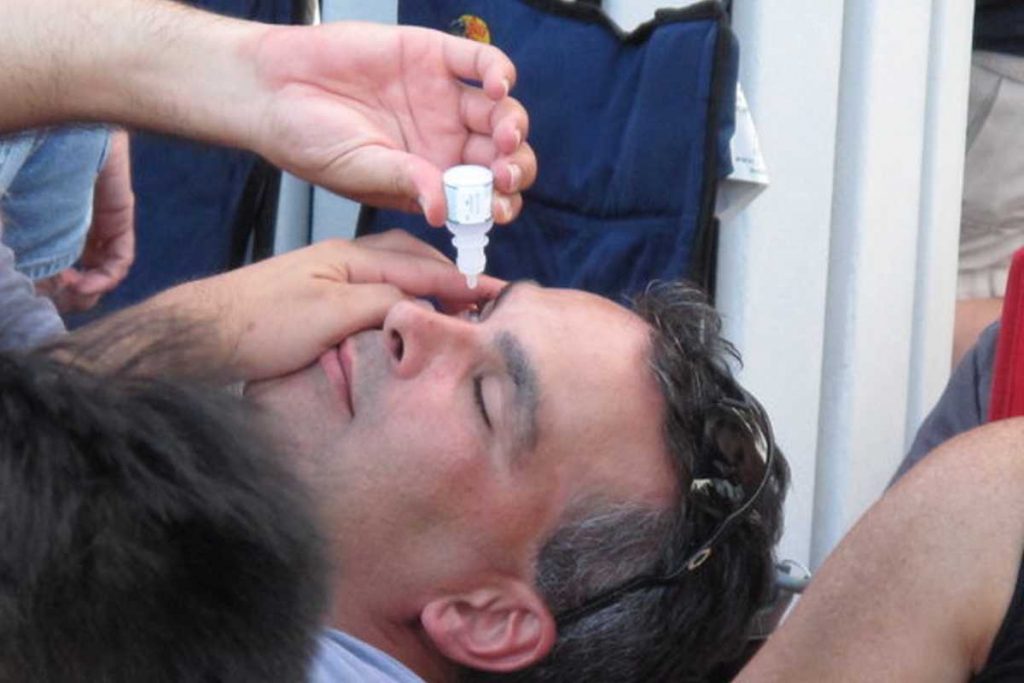How to Treat Computer Vision Syndrome

Computer Vision Syndrome: Nowadays, there are numerous factors that worsen our vision, ranging from natural ones such as the process of aging to more artificial ones, like medications and spending too much time in front of the TV or computer screen. The second one sounds like something that could be easily prevented or treated by simply spending less time in such an environment. However, the problem is when your job is closely related to spending hours in front of a computer monitor.
One such example is my husband. As a computer programmer, he is supposed to spend almost an entire day in from of a computer.
When he was younger, he didn’t feel any consequences related to it, believing that our vision cannot be worsened by numerous hours of computer work. Even then, I noticed that his workstation is not at the optimal spot in our home, as well as that his seating position is not completely healthy. Therefore, I wasn’t surprised when one day he came to me and complained about his vision.
Possible symptoms
When I started researching these symptoms, I found the term Computer Vision Syndrome. As far as I know, this term is not related to one, particular eye disease, but to an entire whole of problems, such as eye redness, twitching, constant irritations, dryness, blurred vision, or even pain.
Finally, it turned out that my husband really suffered from it. That is why we had to immediately undertake numerous steps in order to prevent it on time. Many of these suggestions are not useful for people with vision diseases only, but also for those who want to prevent them.
Asking for professional help
The first thing my husband needed to do was to ask for professional help. He visited a nearby clinic, where an ophthalmologist gave him an exact diagnosis and prescriptions.
Firstly, my husband underwent a detailed comprehensive eye exam, which entailed several segments. After that, the doctor asked him numerous questions about what symptoms he exactly experienced at the time, about the medications he was possibly taking, and how much time he spent straining his eyes at both, work and home.
When all pieces of the puzzle clicked, the ophthalmologist diagnosed him with Computer Vision Syndrome and prescribed him some medications, and gave some effective professional suggestions. I strongly believe that visiting a doctor was the crucial step in my husband’s vision recovery. Thus, regular checkups are the best idea for everyone.
Rest your eyes
One of the most important pieces of advice my husband got was to rest his eyes whenever he can. No matter how much work you have, you should always find time to rest your eyes. For example, after two hours of continuous computer work, you should rest your eyes for at least 20 minutes.
Whether you take a nap or simply look at the distance, it will be effective. Another great idea is using computer glasses, especially for those who don’t have to wear contact lenses or glasses regular eyeglasses. Also, blinking is very important because it scatters tears across our eyes. So, when you need to really concentrate on something, you shouldn’t forget to blink.
Light sources
Next, pay attention to the sources of both, natural and artificial light. Either too much light or a lack of it can lead to vision problems. Make sure that the room has a sufficient number of windows, which would provide it with natural light.
If the sunlight coming through your windows is too intense, try using drapes or blinds. My husband was also advised to replace overly aggressive fluorescent overhead lighting with dimmer and brighter lighting, provided by plug-in scones or floor lamps. They are sources of more pleasant light coming from different angles of the room.
Optimize the workstation
The next thing we have to do was to rearrange the furniture in my husband’s workroom. The first thing the ophthalmologist advised him was to optimize his workstation.
Being too close to the monitor can usually trigger eye fatigue and blurred vision. That is why we had to purchase a desk, which would enable a distance of 20 inches between him and the monitor. Also, we found out about the most common mistake that almost every person makes. The screen has to be about 5 inches below our sight level and it needs to be centered according to the one who sits in front of it.
Make sure that your sitting position is adequate, as well. The chair has to be tall enough to provide comfortable comfort to your tired back. Finally, you only have to make sure that some technical requirements are respected, such as the brightness of your screen or the font and colors you usually use, which will also help you rest your eyes.
Prevent eye dryness
Computer Vision Syndrome is usually related to the syndrome of dry eyes, which is actually one of its manifestations. It is usually prevented by not spending a lot of time in front of your screen, as well as by blinking enough, which has already been mentioned. However, if the sole prevention isn’t enough for you and if you feel that your vision worsened, you have to visit an ophthalmologist.

You will be probably prescribed artificial tear drops, which will lubricate your eyes. My husband uses them, and I have to admit, they are really effective. They moisten his eyes and prevent further irritations and problems. If all else fails, you can always undergo laser eye surgery, which is a more serious, but at the same time immensely helpful solution.
Finally, if you respect these suggestions you will manage to prevent or treat your exhausted eyes from Computer Vision Syndrome. Following them, my husband got rid of this unpleasant and tiresome state once and for all. I, myself, although I still have a clear vision, use these methods in order to prevent my sight.